Latex vs Mylar Balloons: What’s the average lifespan for retail display?
Worried about your balloon displays deflating too fast? Tired of seeing sad, droopy balloons in your store? You need a balloon that lasts.
Latex balloons generally last 1-7 days in store displays, depending heavily on quality. Mylar balloons typically last weeks or even months. Quality and environment significantly impact how long both types of balloons stay inflated and looking good for retail.
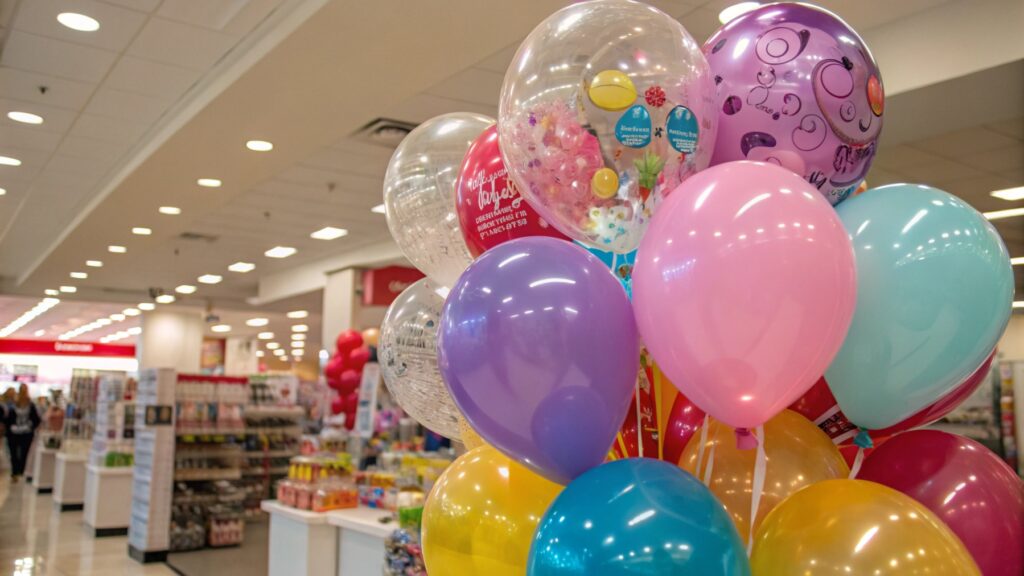
When you're setting up a display, you want it to look great for as long as possible. Nobody wants to see a saggy balloon. It makes your store look bad. You need to pick the right balloon for the job.
How long do latex balloons last in store displays?
Do your latex balloons lose air too quickly in your store? Does it feel like you're constantly replacing them? This can waste time and money.
Latex balloons can last anywhere from a single day to over a week when displayed in a store. The biggest factor affecting their lifespan is the quality of the balloon itself.
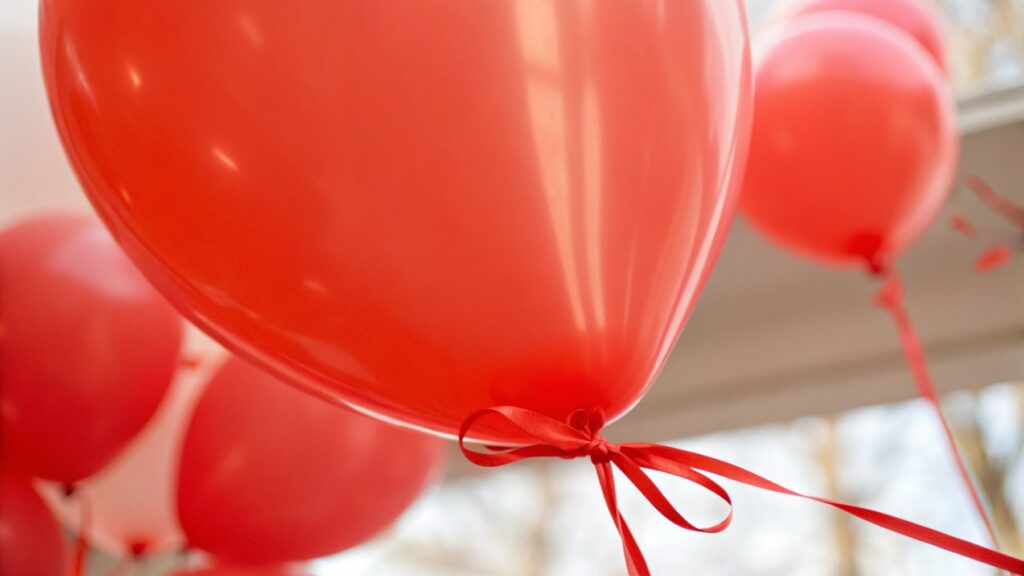
I've seen low-quality latex balloons start deflating within 24 hours. They lose their shape and look sad very quickly. This is bad for retail displays. A deflated balloon doesn't attract customers. It makes your store look neglected. On the other hand, high-quality latex balloons1, like the ones we make at AIHUA BALLOON, can easily last a week or more. I've personally set up displays that stayed inflated for over ten days. The difference is huge. Better quality latex has fewer pores and thicker walls. This slows down how quickly the helium or air leaks out. Think about it like a sieve. A cheap sieve has big holes. Everything goes through fast. A good sieve has small holes. Things stay put longer. It's the same with balloon material.
Here's how quality affects latex balloon lifespan2:
| Quality Level | Material Thickness | Porosity | Lifespan in Store Display |
|---|---|---|---|
| Low Quality | Thin | High | 1-3 days |
| Medium Quality | Medium | Medium | 3-7 days |
| High Quality | Thick | Low | 7+ days |
Beyond the quality, the size of the balloon also matters. Smaller latex balloons tend to deflate faster than larger ones. The surface area to volume ratio is higher in smaller balloons. This means there is more surface for air to leak out compared to the amount of air inside. Also, how you tie the balloon is important. A loose knot will let air escape quickly. A tight knot seals the balloon better. Using ribbons or clips can also impact how well the balloon stays sealed. Environment plays a role too, but quality is the starting point. You can't make a bad quality balloon last long, no matter the environment.
What's the typical lifespan of Mylar balloons for retail?
Are you tired of your shiny balloons deflating in your displays? Do you wish they would stay full and bright for longer? You need Mylar balloons that hold their air.
Mylar balloons typically last much longer than latex balloons in retail displays, often staying inflated for weeks, sometimes even months. This makes them a great choice for long-term displays.
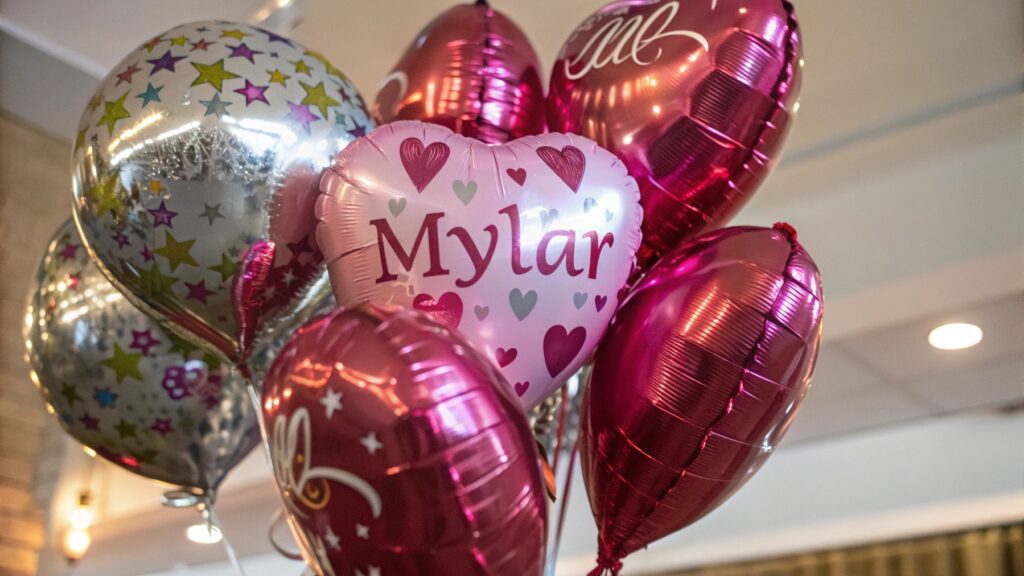
I've seen Mylar balloon displays stay looking good for over a month in a store. I remember one specific promotion where we used large, custom-shaped Mylar balloons. We inflated them at the beginning of the promotion, and they were still floating high and looking vibrant four weeks later when the promotion ended. It was impressive. Mylar is a type of plastic film. It's not porous like latex. This means air or helium leaks out much, much slower. The seams where the pieces of Mylar are joined are the main places where leaks can happen. The quality of the seam sealing3 is critical for Mylar balloon lifespan4. If the seams are not sealed well, the balloon will leak. The valve used to inflate the balloon also needs to seal properly. A faulty valve means a quickly deflating balloon. Just like with latex, environmental factors can play a part, but the inherent material properties and the quality of manufacturing are the main drivers of lifespan for Mylar balloons.
Here's a simple comparison of Mylar balloon lifespan:
| Quality Factor | Seam Sealing | Valve Quality | Typical Lifespan |
|---|---|---|---|
| Low Quality | Weak Seams | Poor Valve | 1-2 weeks |
| Medium Quality | Decent Seams | Good Valve | 2-4 weeks |
| High Quality | Strong Seams | Excellent Valve | Weeks to Months |
Temperature changes can affect Mylar balloons. Cold air makes the gas inside contract, making the balloon look a bit deflated. Warm air makes the gas expand, making it look full again. However, this is about volume change, not leakage. The balloon isn't losing air, it's just reacting to the temperature. Physical damage, like getting poked or rubbed against rough surfaces, can also cause leaks in Mylar balloons. So, protecting them in the display area is important.
Which balloon type lasts longer for retail displays: latex or Mylar?
Are you trying to decide between latex and Mylar for your store display? Wondering which one gives you more bang for your buck in terms of display time? The answer is clear.
For pure longevity in a retail display, Mylar balloons last significantly longer than latex balloons. While latex balloons can last up to a week or more if they are high quality, Mylar balloons can easily last for weeks or even months.
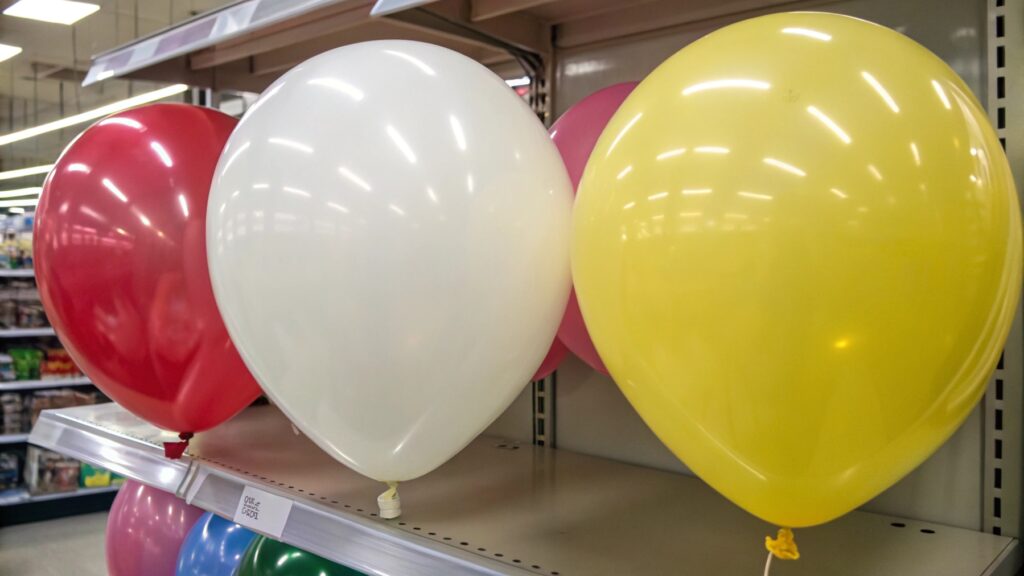
From my experience, if your goal is to set up a display that stays looking great for a long time without needing frequent attention, Mylar is the way to go. I've worked on displays where we needed balloons to last for a month-long promotion. We always chose Mylar for those. We might use some latex balloons for pops of color at the beginning, knowing we would need to replace them. But the core, long-lasting elements were always Mylar. The non-porous nature of the Mylar material is the key difference. Latex is made from rubber, which has tiny pores. Gases can slowly escape through these pores. Mylar is a plastic film. It's much less permeable to gases. Think of it like a plastic bag versus a paper bag. A plastic bag holds air much better than a paper bag.
Here’s a quick comparison:
| Feature | Latex Balloons | Mylar Balloons |
|---|---|---|
| Primary Material | Natural Rubber Latex | Plastic Film (Mylar) |
| Porosity | High | Very Low |
| Typical Lifespan | 1-7+ days (Quality dependent) | Weeks to Months (Quality dependent) |
| Best Use | Short-term events, vibrant displays | Long-term displays, specific shapes |
However, while Mylar wins on lifespan, latex balloons offer something different. They come in a vast array of colors and sizes. They also have a softer, more natural look that many people prefer. For impact and visual appeal, especially in large quantities, latex is often superior. We've found that using a mix of both types often creates the most effective retail displays. You get the long-lasting structure from Mylar and the vibrant, full look from high-quality latex. It's about choosing the right tool for the specific part of the display and how long you need it to last.
How does environment affect latex and Mylar balloon lifespan in stores?
Are your balloons losing air faster than you expect? Could the conditions in your store be shortening their life? The environment plays a key role.
The environment inside your store, including temperature, humidity, air currents, and exposure to light, can significantly impact how long both latex and Mylar balloons remain inflated and attractive for display purposes.
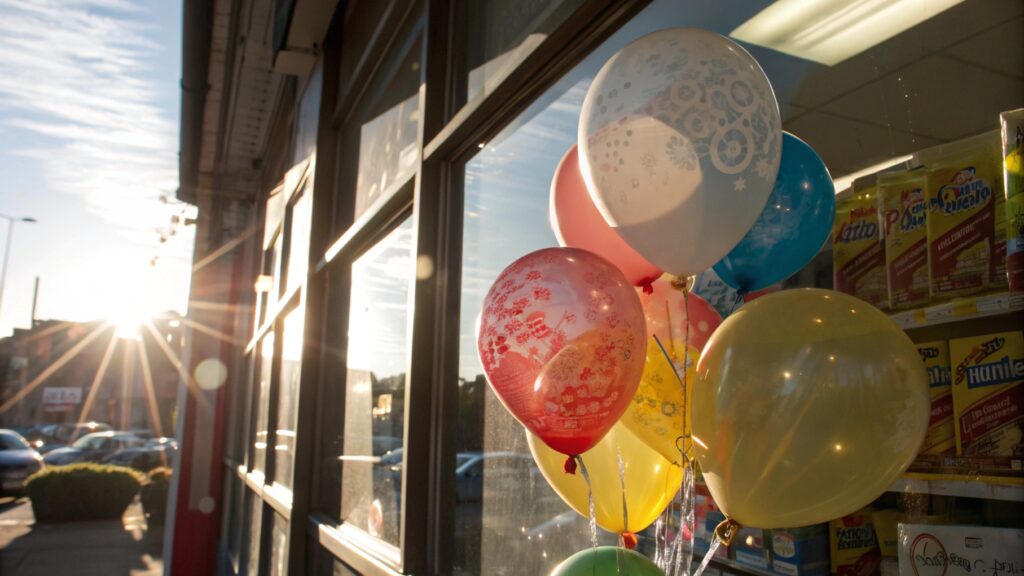
I’ve seen firsthand how a bad environment can ruin a great balloon display quickly. Once, we had a display near a large window. The sunlight hitting the balloons was brutal. The latex balloons oxidised and became cloudy and brittle within a couple of days. The heat also made both the latex and Mylar balloons expand during the day and contract at night, stressing the material. High temperatures speed up the rate at which gas leaks from latex balloons. They also make the material break down faster. Direct sunlight is especially bad for latex. It causes oxidation, which makes the balloon look dull and cloudy, and weakens the material. For Mylar balloons, heat can increase the pressure inside, potentially stressing the seams. While Mylar isn't as affected by sunlight's UV rays as latex, extreme heat is still not ideal.
Here's a look at environmental factors5:
| Environmental Factor | Impact on Latex Balloons | Impact on Mylar Balloons |
|---|---|---|
| Temperature (High) | Increases leakage rate, speeds material breakdown | Can stress seams, causes expansion |
| Temperature (Low) | Makes balloon appear smaller (contraction) | Makes balloon appear smaller (contraction) |
| Direct Sunlight (UV) | Causes oxidation, weakens material, speeds breakdown | Less impact than on latex, can cause slight fading over long periods |
| Humidity (High) | Can make balloons slightly heavier, less impact on lifespan directly | Little direct impact on lifespan |
| Air Currents (Drafts) | Can cause movement and potential abrasion | Can cause movement and potential abrasion |
Air conditioning and heating systems can create dry environments and air currents. Dry air can slightly speed up evaporation in latex balloons if using air, but the bigger issue is consistent temperature. Rapid temperature changes are worse than a steady temperature, whether high or low (within reason). Drafts can cause balloons to rub against each other or other objects, leading to punctures or abrasion, which shortens the lifespan of both types. Positioning displays away from direct vents, windows, and high-traffic areas reduces these risks. Choosing a stable location in the store helps ensure your balloons look their best for as long as possible. It's about minimizing the stress on the balloon material and the seals.
Conclusion
For retail displays, Mylar balloons last much longer than latex, often weeks or months compared to days. High quality is key for both types to maximize display time.
-
Explore how high-quality latex balloons can enhance your retail displays and attract more customers with their longevity. ↩
-
Understanding the factors that influence latex balloon lifespan can help you make better choices for your displays. ↩
-
Learn how seam sealing impacts the quality and longevity of balloons, ensuring your displays remain vibrant longer. ↩
-
Understanding the factors that influence Mylar balloon lifespan can help you make informed decisions for your displays. ↩
-
Learning about environmental factors can help you optimize balloon displays for longevity and visual appeal. ↩
